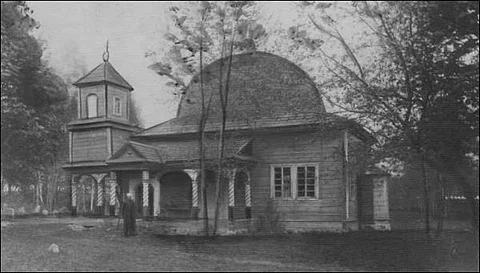

From the third millennium BCE to the 14th century CE, Europe became home to waves of migrants speaking Aramaic, Indo-Iranian, Turkic, Finno-Ugric, Mongolic, and possibly Indic languages. These migrations, often driven by trade, warfare, or conquest, introduced ethnic and linguistic diversity that shaped the continent’s demographic and cultural landscape. While some groups retained distinct identities, most eventually assimilated into the dominant societies around them.
Among these were the Syrians and Jews (Aramaic-speaking), Sarmatians and Alans (Iranian-speaking), Huns, Avars, Cumans, Pechenegs, Khazars, and Proto-Bulgarians (Turkic), Hungarians (Finno-Ugric), and Mongols. Over time, with the exception of the Hungarians and the Crimean Karaites, most of these groups lost their original languages, adopting those of the surrounding populations.
Jewish Communities and Iranian Connections
The case of Jewish communities offers a striking example of ethno-linguistic blending. Some Jews in Eastern Europe likely descended from mixed Slavo-Iranian populations, similar to the Croats, who may have originated as an Iranian tribe that later adopted Slavic speech. Jewish groups spoke various languages, including Slavic dialects like Yiddish, Iranian languages, and possibly Eastern Aramaic.
Historical records indicate that some Jews in Belarus remained monolingual Slavic speakers well into the 17th century. The diversity within these Jewish communities suggests that it is imprecise to speak of unified “Iranian” or “Turkic” tribes. Smaller merchant groups may have shared a single language and ethnic identity, but larger coalitions, such as mercenary forces, were often confederations of multiple tribes.
The Radhanites, a network of Jewish merchants described in the ninth century by Persian geographer Ibn Khordadbeh, exemplify this cosmopolitanism. These traders, operating across the Islamic world and Europe, were said to speak Persian, Arabic, Slavic, Greek, Frankish (likely a form of early German), and Andalusian. While individual fluency in all six languages was unlikely, their linguistic flexibility underscored the multicultural reality of medieval commerce.
The Khazar Legacy and Karaite Survival
The Khazars, a semi-nomadic Turkic people who established a powerful state in the steppes north of the Black Sea, were polyethnic, incorporating Turkic, Slavic, Caucasian, and Finno-Ugric groups. Although the ruling elite spoke a Turkic language, the broader population was linguistically diverse. Some Jewish communities in Eastern Europe may trace their roots to Khazar converts to Judaism in the ninth century, although they rarely claimed such ancestry explicitly.
A clearer legacy survives among the Karaites, a Turkic-speaking Jewish sect originating in Crimea. Practicing a form of Judaism that rejects the authority of the Talmud, an approach that emerged in eighth-century Iran—Karaites in Belarus, Ukraine, and Lithuania preserved their Turkic language, Karaite, for centuries. Only in recent decades have they transitioned to speaking local Slavic or Lithuanian languages. This makes Karaite the longest-surviving Turkic language in the Slavic-speaking world.
The Karaites' mixed Turkic-Iranian heritage and religious distinctiveness underline their unique position. Unlike other Jewish groups, their linguistic history includes deep ties to Crimean Turkic and Iranian traditions, maintained even after centuries in Slavic territories.
Belarusian Tatars and the Erosion of Turkic Speech
The Belarusian Tatars offer a parallel case of assimilation and identity renegotiation. Initially Turkic-speaking Muslims who settled in the Grand Duchy of Lithuania, these communities gradually adopted Slavic languages; Polish, Belarusian, and Ukrainian, by the 17th century. Factors behind this linguistic shift included the early integration of Slavic women, male military service, and a lack of cohesive Turkic-speaking settlements.
Unlike the Karaites, the Tatars used Arabic as their religious language, rather than Turkic. Their early linguistic diversity, some may have spoken Kipchak dialects from Crimea or Kazan, further weakened efforts to preserve a unified vernacular. Additionally, many early settlers may have held non-Muslim beliefs, such as Shamanism or Christianity, adding to the group’s internal diversity and weakening linguistic continuity.
Tatars attempted to construct a distinctive ethno-linguistic identity by manipulating Islamic vocabulary and selectively distancing their speech from that of Christian Belarusians. For instance, they often distorted Arabic loanwords in ways not found in surrounding Slavic communities. Examples include mjeczet for ‘mosque’ and mezim for ‘muezzin’, diverging from both Arabic and Slavic equivalents. The term mumibir (‘pulpit’), likely derived from a blend of Arabic and Persian forms, is not used by Belarusian Christians, suggesting a unique Tatar adaptation.
Some loanwords were shared between Tatars and Yiddish-speaking Jews, indicating potential cross-cultural contacts. The shared distortions of Arabic terms, such as almemer in Western Yiddish and balemer in Eastern Yiddish, may point to a common legacy of integration from the Islamic world.
Preserving Identity Without Language
Without a living Turkic language, the Tatars relied on other strategies to maintain their cultural distinctiveness. These included using the Arabic script for Slavic texts and borrowing religious vocabulary from Turkic, Persian, and Arabic sources. However, efforts to develop a distinct ethnolect of Belarusian were only partially successful. For example, the word hramotka (‘amulet’) is a unique Tatar creation based on the broader Slavic root hramata, which generally means ‘document’ or ‘decree’.
Over time, newer generations of Tatars became increasingly Slavicized. Still, they maintained a distinct Islamic identity through selective borrowing and adaptation. Examples include periphrastic verb constructions, such as combining native verbs with Arabic or Persian nouns, a technique also found in Yiddish and Karaite.
The Belarusian Tatars’ linguistic evolution reflects both external pressures and internal choices. Unlike other assimilated groups, they consciously crafted a Muslim identity within a predominantly Christian, Slavic environment, though their Turkic linguistic heritage largely faded.